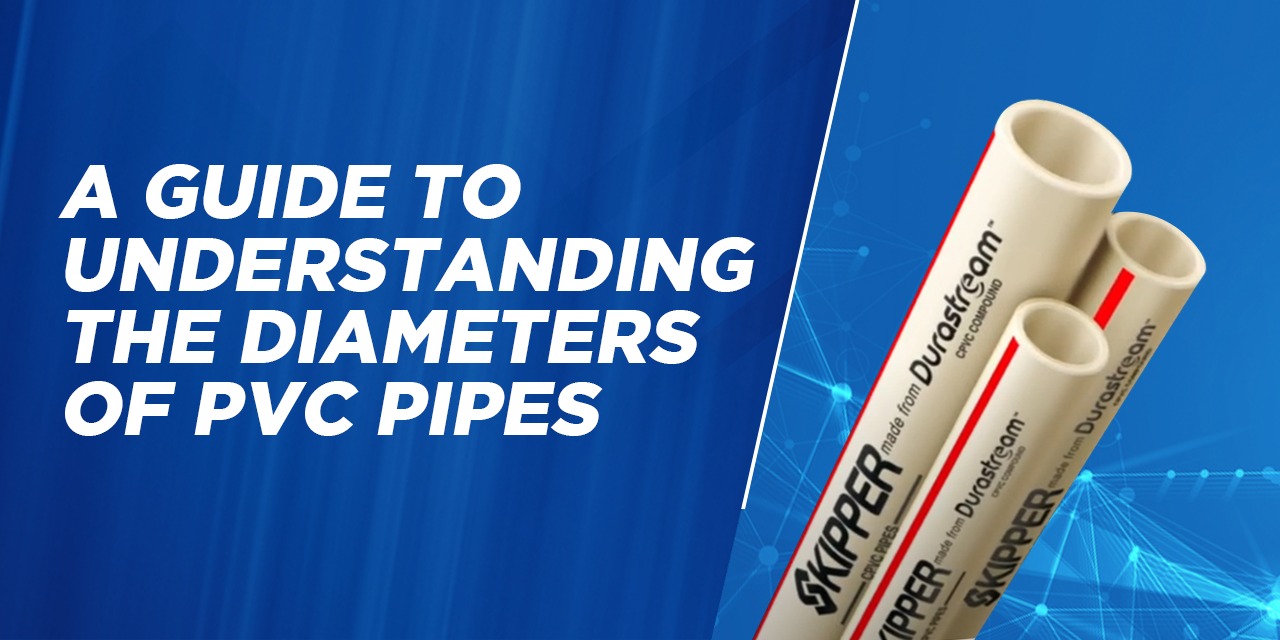Understanding the Diameters of PVC Pipes
With their versatility and durability, PVC pipes are a staple in various applications, from plumbing and construction to DIY projects. But deciphering their “size” can be confusing, as it doesn’t directly refer to their outer diameter. This guide delves into the complexities associated with the diameters of PVC pipes, helping you choose the right ones for your needs.
The Nominal Sizing System: Demystifying “Inch” Sizes
Unlike metal pipes, PVC pipes use a nominal sizing system. This means the size printed on the pipe (e.g., 1 inch) refers to the nominal pipe size (NPS), which corresponds to its inner diameter (ID), not the outer diameter (OD). Remember, this nominal size is a designation, not an exact measurement.
Why not use the actual OD? This system simplifies fitting compatibility. All 1-inch pipes, regardless of their exact OD due to varying wall thickness, can fit into 1-inch fittings.
Key Measurements:
Inner Diameter (ID): The crucial measurement for flow capacity and fitting compatibility. It’s the nominal size printed on the pipe.
Outer Diameter (OD): The actual outside diameter of the pipe. It’s always more significant than the ID due to the wall thickness.
Wall Thickness: The thickness of the pipe wall affects its strength and pressure rating. It increases with larger diameters and higher schedule ratings (explained later).
Schedule Ratings: Understanding Pipe Strength
Schedule ratings (e.g., Schedule 40, Schedule 80) indicate the pipe wall thickness and pressure rating. Higher schedules have thicker walls, making them suitable for higher-pressure applications. However, they also have a slightly smaller ID due to the thicker walls.
Common Schedule Ratings:
Schedule 40: Most commonly used for general plumbing, drainage, and irrigation.
Schedule 80: Thicker walls, suitable for higher-pressure applications like hot water lines.
Schedule 120: Even thicker walls are used for industrial and high-pressure applications.
Choosing the Right Diameter: Consider Flow and Pressure
Flow Rate: The amount of fluid (water, gas, etc.) you need to transport. Bigger diameters allow for higher flow rates but come at a higher cost.
Pressure Requirements: The pressure the pipe needs to withstand. Choose a schedule rating based on your application’s pressure demands.
Tips for Choosing the Right Diameter:
Consult charts or online calculators: Many resources provide diameter recommendations based on flow rate and pressure for different applications.
Consider future needs: If you anticipate increased flow or pressure, choose a slightly larger diameter for flexibility.
Seek professional advice: Consult a plumber or engineer for guidance for complex projects or critical applications.
Conclusion
Navigating the diameters of PVC pipes may seem daunting, but armed with the knowledge provided in this guide, you’re better equipped to make informed decisions for your projects. Remember, the inner diameter, outer diameter, and schedule ratings play crucial roles in determining the suitability of PVC pipes for various applications. By considering factors such as flow rate, pressure requirements, and future needs, you can select the right diameter and schedule rating to ensure optimal performance and longevity.
FAQs
Q. How can I measure the exact diameter of my PVC pipe?
A. Use a caliper for accurate ID and OD measurements. Alternatively, refer to size charts based on the schedule rating and nominal size printed on the pipe.
Q. Can I use different schedule ratings with the same nominal size?
A. Yes, fittings are compatible with the nominal size, not the schedule rating. However, the ID will differ slightly due to the varying wall thicknesses.
Q. What if I need a specific OD for my project?
A. While the nominal size refers to the ID, some manufacturers might list ID and OD on their pipes. You can also search for specific OD pipes from specialized suppliers.
Q. Are there any metric equivalents for PVC pipe sizes?
A. Yes, metric sizes are available alongside imperial sizes. Ensure you’re using the correct system for your project, and refer to conversion charts if needed.
Q. Where can I find more information about PVC pipe diameters?
A. Many online resources provide detailed charts, calculators, and guides on PVC pipe diameters and schedules. Additionally, hardware stores and plumbing professionals can offer assistance.
By understanding the intricacies of PVC pipe diameters and schedule ratings, you can make informed choices for your projects, ensuring optimal performance and safety. Remember, when in doubt; seek professional advice for complex applications.




0 Comments